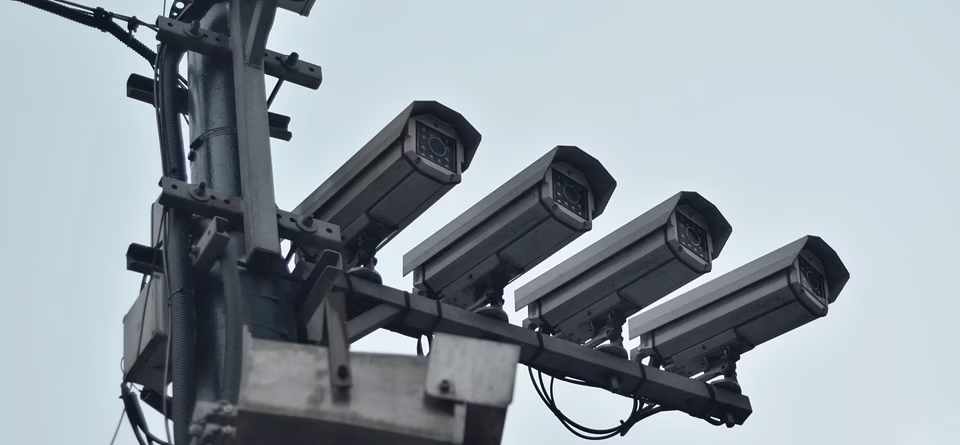Enhancing Security: The Role of CCTV in Public Safety
AK-AI2024-12-16T02:53:29-05:00
In today’s ever-evolving landscape of public safety, Closed-Circuit Television (CCTV) has emerged as a critical player in maintaining order and security across a wide variety of environments. From bustling city centers to serene suburban neighborhoods, these electronic sentinels vigilantly record activities, deterring nefarious behavior and providing authorities with crucial evidence when incidents occur. This article explores the multifaceted role of CCTV in enhancing public safety, offering insights into its functioning and evolving significance.
The Ubiquity of CCTV: A Dawn in Public Security
Like the vigilant Argos Panoptes of Greek mythology, CCTV cameras are everywhere, poised to capture every angle of potential interest. The global proliferation of CCTV is both a marvel of modern technology and a testament to its perceived necessity in preserving public order. According to a study by IHS Markit, there were about 1 billion surveillance cameras globally by 2021, a number poised to grow exponentially. But quantity alone doesn’t define CCTV’s impact. It’s the strategic placement and technological enhancements like high resolution and night vision that ensure these cameras aren’t just present but also effective. Take, for instance, the role of CCTV in urban areas. It’s no secret that cities like London and Beijing have massive surveillance networks; CCTV acts as an extension of a city’s “eyes,” unmatched in its ability to consistently record and archive city life. These cameras serve as a deterrent to crime, with studies showing a notable decrease in crime rates in areas under surveillance. For a more in-depth look at how city planners strategically place and utilize CCTV networks, consider reading this comprehensive guide on CCTV logistics.CCTV and the Cloud: A Marriage Made in Heaven
As with many technological advancements, CCTV has not shied away from the “cloud,” that ethereal entity that isn’t quite in the sky but is yet everywhere. With cloud-based storage, footage can be stored off-site, minimizing risk of data loss due to vandalism or technical failures. Moreover, cloud services allow for real-time monitoring across vast distances, meaning operators can view live or recorded footage from anywhere with internet access. This development isn’t just a boon for security professionals; it gives stakeholders flexibility that was previously unimaginable. For those looking to integrate cloud solutions into their CCTV setup, products such as the Ring Security Cameras offer a user-friendly introduction to cloud-enabled surveillance. Their flexibility and scalability make them suitable for a variety of security frameworks, from small businesses to large public spaces.Legitimacy and Privacy: Walking the Tightrope
No discussion on CCTV would be complete without venturing into the delicate debate between surveillance and privacy. Much like a circus performer on a tightrope, striking the right balance requires skill, precision, and an understanding of the potential pitfalls. Surveillance without warrant can verge into authoritarianism, yet too little oversight risks public safety. The solution is as much legal as it is technological. Around the world, different jurisdictions have enacted legislation to ensure surveillance serves the public interest without infringing on personal freedoms. Noteworthy here is the General Data Protection Regulation (GDPR) in Europe, which establishes strict guidelines about data handling and storage, ensuring oversight where privacy intersects public safety. Discover more about how GDPR impacts surveillance technologies by visiting GDPR Info.AI and CCTV: The Future is Now
An exciting arena for CCTV is the integration of Artificial Intelligence (AI). Traditional CCTV systems, while effective, require human operators to monitor and analyze footage—a nuanced task that AI can revolutionize by automating the detection of anomalies or suspicious behavior. AI algorithms are adept at recognizing patterns and alerting authorities to events such as loitering, unauthorized entry, or abandoned packages, which could pose potential threats. Consider exploring the capabilities of the Axis Communications AI-powered cameras, which offer intelligent video analytics. These innovations not only enhance the efficacy of surveillance but also expand the scope of what CCTV can potentially achieve in terms of proactive public safety.Ethical Considerations: Where Do We Go From Here?
While CCTV technology edges closer to becoming a comprehensive solution for public security, it’s critical to remain vigilant about ethical issues. The potential for misuse—whether intentional or due to malfunctions—cannot be ignored. Transparent policies and constant reevaluation of surveillance ethics are essential to maintaining trust between the public and authorities. Public consultations and transparent discussions on the extent and limits of surveillance, alongside robust legal frameworks, are vital for ensuring that CCTV’s role in enhancing security is tethered to democratic values and human rights. A multitude of resources, including the Amnesty International report on surveillance, offer valuable insights into these complex ethical landscapes.Discover more from Akiatech Solutions Blog
Subscribe to get the latest posts sent to your email.
